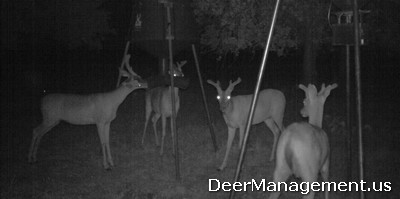Question: We have about 800 acres in Llano County where we have been practicing deer management over the past two years. We just started putting out protein pellets this past winter. I have been checking the game cameras recently and bucks are hammering the protein pellets. In fact, there is a bachelor group of five bucks coming to one particular feeder on the north end of our property every night.
The oldest buck looks to be about 5 1/2 to 6 1/2 years old, which is good to know that we do have some older deer on the place. One thing that does concern me, however, is that we have very few does coming to the protein feeders. Whitetail bucks seem to be dominating all four of our protein feeders, and we just are not seeing as many does as we thought. During the last hunting season, it looked like we had about three does to every buck, but the camera photos are showing more bucks than does. Is this common on other properties?

Response: Actually, yes, it is common for game cameras to photograph more bucks than does and protein feeders. This is because males, the biggest and strongest animals, tend to dominate the best resources, including protein feeders. This is one reason why I recommend that hunters and landowners to never use camera photos from protein feeders to estimate the buck to doe ratio on a property. Cameras placed on feeders will always skew the numbers towards bucks.
That being said, Llano County is looking pretty bad this year. With the lack or rain, I am surprised that you have not seen a good number of does on camera to, but there may be other reason involved right now. Does may also be tending to their fawns more right now since most are still quite small. Because of this, does may be avoiding all feeders, protein included, to some extent until their young get a bit older.
Lactation and fawn rearing takes a lot of energy, so I suspect doe activity around the protein feeders on your ranch will increase as fawns increase in size. Although cameras placed at protein feeders will not help you ascertain the buck to doe ratio, they will help you get a really good idea of the bucks on your piece of real estate. These photos should reveal the buck age structure as well as help you find the shooters this deer hunting season, whether they be mature trophies or those classified as culls, and that should help your deer management program.
If you want to use game cameras for deer surveys, scatter several cameras across your property on trails, water sources or roadways. This will help you estimate the buck to doe ratio as well as the fawn production of deer found on your property.